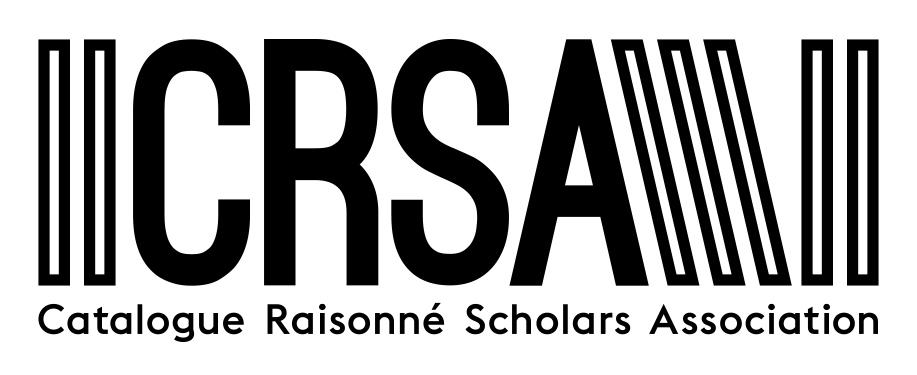Richard Diebenkorn in his studio, 1968 – © The Richard Diebenkorn Foundation, Berkeley, Calif.
Artist: Richard Diebenkorn (1922–1993)
Scope: The Diebenkorn catalogue raisonné will be a comprehensive presentation of works by the artist. The 4 volumes of the catalogue raisonné will present some 4,900 unique artworks; primarily works on paper and paintings, but also a few mixed-media pieces and sketchbooks. RD was an active printmaker and there will be a future publication dedicated to his graphic works.
Database: TMS from Gallery Systems
Print or Digital: Print
Publisher: Yale University Press
Schedule: When the project was first envisioned in the mid-90s, the estate was unaware of the full scope of the artist’s work and the level of effort needed to complete the project. It wasn’t until the Foundation established a relationship with Yale University Press–the only publisher to work on this scale for a mid-century artist–that we were able to develop a realistic sense of the time required for completion. Using a staggered schedule, two volumes on the artworks have been delivered to the editors and the last two volumes, the remaining artwork volume and the research volume with essays and supporting documents, will be wrapped up by the spring of 2014. The catalogue raisonné will go to press in 2016.
Organized by: The Richard Diebenkorn Foundation, Berkeley, Calif.
CRSA: What are some of the Richard Diebenkorn Catalogue Raisonné’s primary resources?
Carl Schmitz: The estate’s records and library, communication with museums, galleries, and auction houses, and extensive research conducted at libraries and archives are some of our tangible assets. Our most valuable resource, however, is the Diebenkorn family’s involvement.
CRSA: What is unique about the approach being taken with this catalogue raisonné?
CS: There are two essential elements to our work on the catalogue raisonné for which we maintain the highest possible standards: the color accuracy of our reproductions and the thoroughness of our research. Richard Grant, the Foundation’s Executive Director and the artist’s son-in-law, has made a strong commitment to making sure that the color of the reproductions on the page are as accurate as possible to the artworks. A good deal of this comes from his memory of RD looking at poor quality reproductions and feeling like black and white may have been a fairer representation. Our charge is to get the color right and to that end we are performing all original digital photography while utilizing and continually exploring advanced color management.
On the research side, we have been at it long enough that it’s a good shock to the system when there are new publications and new research that really changes things. The recent biography of Diebenkorn’s colleague David Park done by Nancy Boas is one of those game-changers. It’s amazing to think that there are completely new things to be discovered about an artist like Park who we lost over 50 years ago. For Diebenkorn, we hope that the catalogue raisonné will become a widely used source for discovery of new ideas about an artist we lost 20 years ago. Some of these insights will come through the included essays written by John Elderfield, Ruth Fine, Steven Nash, Gerald Nordland, and our editor Jane Livingston. Other, more obscured pearls will be found in the chronology’s footnotes, a listing in the exhibition history, or a citation in the bibliography. A wealth of material will certainly be left on the catalogue raisonné’s cutting room floor, but it will be available to scholars in the Foundation’s archive. In the meantime, the research process that drives us up to that point will continue to be purposeful.
CRSA: What specific challenges do you face in researching Richard Diebenkorn?
CS: We are at least somewhat fortunate that Diebenkorn didn’t often utilize non-traditional media and that he didn’t have a studio production line. This may have helped us avoid some of the difficulties involved in the authentication process. Being located in California can be a challenge given the distance to some wonderful resources like all of the New York Art Resources Consortium libraries and the Archives of American Art’s Washington headquarters, but this just means that we have to be efficient when there’s an opportunity to get out there. One of our goals is to help build more resources in the west.
CRSA: Are you preparing additional content beyond artwork, exhibitions, bibliography and chronology?
CS: There will also be essays and concordances, and a few planned special features include illustrations of items from the artist’s studio and a section dedicated to writings and statements by the artist.
CRSA: Are there plans for supplements? Would you consider adapting a digital version?
CS: We are still very much in the work of the 4 volumes that will be ink on paper but are constantly reflecting on future endeavors.
For more information, please refer to The Richard Diebenkorn Foundation’s website http://www.diebenkorn.org/

